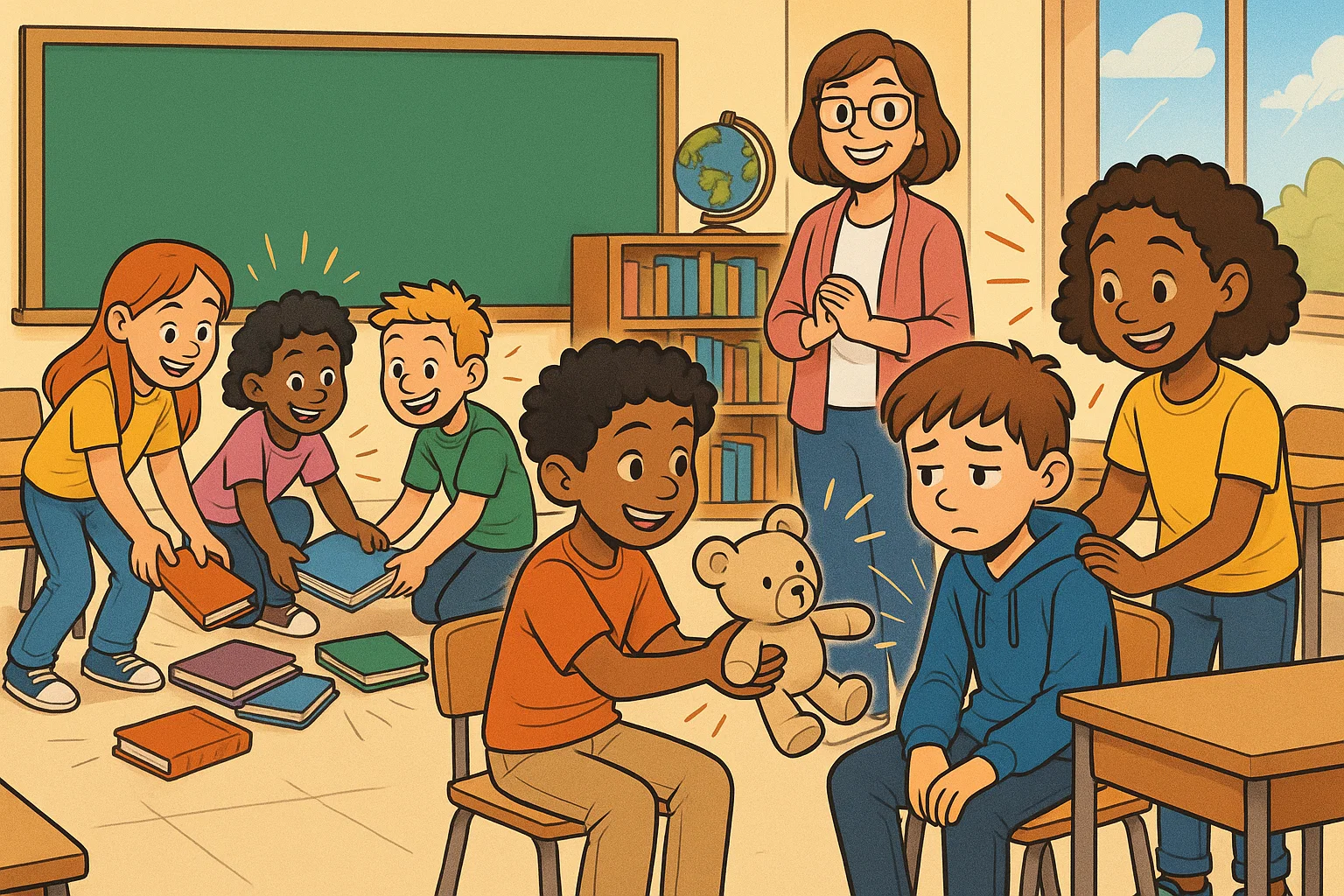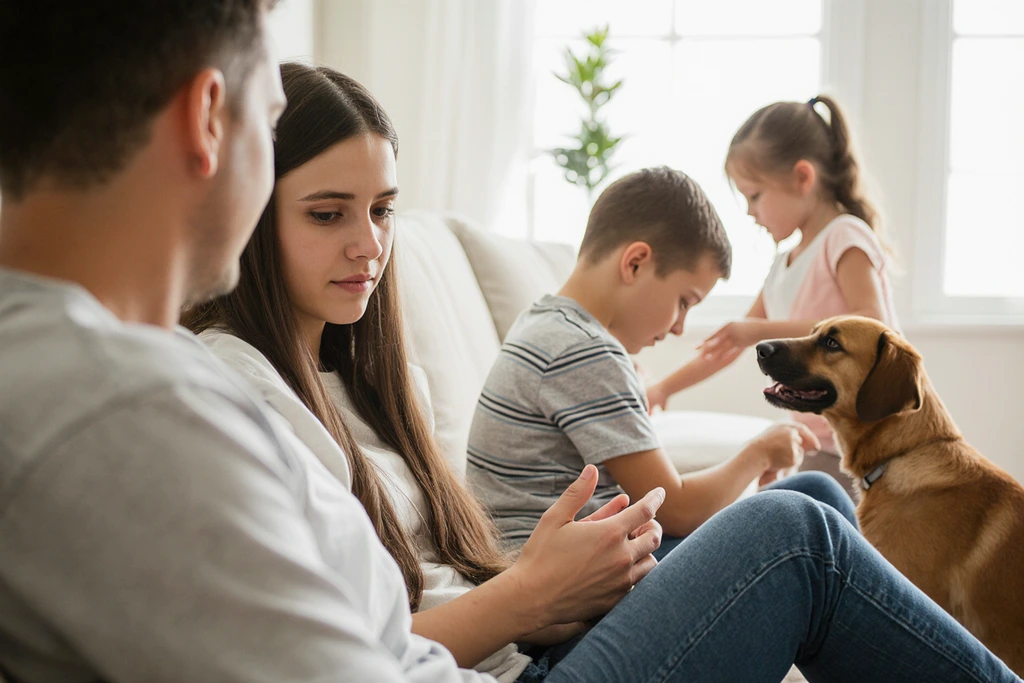How to Teach Empathy to a 12-Year-Old: Fostering Kindness and Perspective-Taking

Navigating the pre-teen years can be a whirlwind of new social dynamics, academic pressures, and personal growth. As a parent, one of the most vital social skills you can help your child develop during this time is empathy. Teaching empathy to a 12-year-old is crucial, as they are building the emotional and cognitive foundation for all their future relationships.
At this age, children are moving beyond simple emotions and are capable of more complex perspective-taking. Nurturing this ability helps them build stronger friendships, resolve conflicts, and develop a deeper sense of kindness and compassion for the world around them.
Why Is Empathy So Important for a 12-Year-Old?
Empathy isn’t just a single feeling; it’s a complex skill. For 12-year-olds, it generally breaks down into two types:
- Cognitive Empathy: The ability to understand what another person might be thinking or feeling. This is the “what if I were in their shoes?” part of empathy.
- Affective Empathy: The ability to actually share or feel the emotions of another person. This is what we often think of when someone feels sad because their friend is upset.
While your 12-year-old has the mental capacity for both, they may struggle to apply them consistently. Helping them practice is key. In fact, research suggests that children with strong empathy skills see significant positive outcomes, including 23% higher grades on group projects and 40% fewer conflicts with peers. Fostering empathy can also help reduce their own anxiety.
Core Strategies to Teach Empathy

To teach empathy effectively, you need to make it a part of your daily life. It’s not a one-time lesson but an ongoing conversation.
Be an Empathy Role Model
One of the most effective ways to help children learn is through your own actions. Consistent modeling of empathetic behavior is fundamental. When you show empathy, you give your child a blueprint for how to interact with others.
- Express concern when a friend or family member is upset.
- Acknowledge different viewpoints during a disagreement, even if you don’t agree. You might say, “I understand why you feel that way, even though I see it differently.”
- Practice active listening by putting your phone down and giving your full attention.
Remember to model empathy even when you’re upset with your child. Acknowledging their feelings, rather than dismissing them, reinforces that empathy is for all situations, not just easy ones.
Encourage Perspective-Taking
Helping your child imagine life from someone else’s viewpoint is a cornerstone of empathy. This is the skill psychologists call Theory of Mind. Make it a regular habit to ask curiosity-driven questions.
- “How do you think your friend felt when that happened?”
- “What do you think was going through your brother’s mind?”
- “If you were in that situation, what would you need to feel better?”
Use movies, books, or even news stories as springboards for discussion. Talk about why the characters think and act the way they do, encouraging your child to look beyond the surface.
Talk Openly About Emotions
Create a home where all emotions are welcome. When you help your child build a rich emotional vocabulary, you give them the tools to understand their own feelings and recognize them in others.
Instead of saying, “There’s nothing to be afraid of,” try validating their feelings first: “I can see that you’re scared. What about it is making you feel that way?” Help them connect physical sensations to their emotions, like a tight stomach when they’re nervous or a warm feeling when they’re happy.
Practical Activities to Foster and Show Empathy

Engaging in fun, intentional activities can help make the abstract concept of empathy more concrete for your 12-year-old.
| Activity Type | Description | How It Helps |
| Role-Playing | Act out scenarios like a friend losing a pet, a classmate being excluded, or someone getting bullied. | Allows your child to practice empathetic responses in a safe environment without real-world pressure. |
| Reading & Storytelling | Read books with complex characters and discuss their motivations, feelings, and decisions. | Books like Wonder by R.J. Palacio or The Hundred Dresses by Eleanor Estes let kids step into another person’s world. |
| Emotion Charades | Play emotion charades using more complex feelings like “overwhelmed,” “disappointed,” or “conflicted.” | This helps your child recognize subtle nonverbal cues, facial expressions, and body language. |
| Volunteering | Participate in acts of kindness, like volunteering at an animal shelter or helping at a food bank. | Connects the concept of empathy to real-world action and shows them they can make a difference. |
Top Tips on How to Teach Empathy To Young Children

Looking for a quick summary? Here are some actionable tips you can start using today to foster empathy in your 12-year-old.
- Model the Behavior You Want to See: Your actions speak louder than words. Show empathy in your daily interactions with your family, friends, and community.
- Discuss Feelings (Yours and Theirs): Normalize talking about different emotions. Share how you’re feeling and ask about their emotional world.
- Use Stories to Build Perspective: Whether it’s a movie, a book, or a family story, use narratives to explore how different people experience the world.
- Practice Acts of Kindness Together: Small actions, like writing a thank-you note or helping a neighbor, build the habit of helping others.
- Teach Active Listening: Show your child how to listen without interrupting and reflect on what the other person is saying. This makes the speaker need to feel heard and valued.
- Acknowledge and Praise Empathetic Actions: When you see your child being kind or considerate, praise them for it. Say something specific, like, “It was really thoughtful of you to ask how your friend was feeling.”
Overcoming Common Challenges
Teaching empathy isn’t always a smooth road. You might encounter some resistance or confusion along the way. Here’s how to handle it.
| Challenge | Solution |
| Your child seems resistant or uninterested. | Start with what they love. Use their favorite video game characters, YouTubers, or movie heroes as a starting point for perspective-taking discussions. |
| Your child gets emotionally overwhelmed. | Teach them that understanding how another person feels doesn’t mean they have to carry that emotion themselves. Introduce coping strategies like deep breathing or taking a short break. |
| The lessons aren’t sticking. | Consistency is key. Empathy isn’t something you teach once. Integrate these conversations and activities into your daily routines for long-term growth. |
Ultimately, helping your 12-year-old develop strong empathy skills is a gift that will benefit them throughout their lives. It enriches their relationships, boosts their emotional intelligence, and helps them become more compassionate members of society. Celebrate the small steps, be patient with the process, and remember that you are guiding them toward a more connected and caring future. ❤️
Frequently Asked Questions About Teaching Empathy
What are the best games and activities to build empathy in children?
Some of the most effective games and activities to build empathy involve stepping into someone else’s shoes. Role-playing different social scenarios allows school kids to practice their responses in a safe space. You can also play games like “Emotion Charades,” where you act out feelings and try to guess what they are. This helps children become better at reading people’s emotions through nonverbal cues. Storytelling games where one person starts a story and the next has to continue it from a different character’s point of view are also excellent for perspective taking.
How can I teach empathy toward people who are different from us?
Teaching empathy toward people who are different from us is crucial for breaking down stereotypes. A key parenting strategy is to expose your child to diverse stories and cultures through books, films, and community events. Discuss how a stereotype is an unfair and incomplete story about a group of people. Encourage them to find common ground and see the shared humanity in general. This helps them extend warmth and care beyond their circle of close loved ones to people they may not know.
My child struggles to understand another child's feelings. What can I do?
If your child has a hard time understanding how another child feels, start by validating your own child’s emotions first to model the behavior. Then, gently guide them through perspective taking. You might ask, “When you fell yesterday, you felt sad. Do you think that’s how your friend might be feeling right now?” This helps them connect their own experiences to what others kids feel and is a foundational part of emotion regulation. The goal is to help them understand what might make him feel a certain way, building a bridge of understanding.
At what age should you start teaching empathy? Is it different for a toddler vs. school kids?
You can start fostering the building blocks of empathy even with a toddler. For young children, it’s about labeling emotions—”You are happy!” or “The baby is sad.” As they approach ages 5 and up, school kids can grasp more complex ideas like perspective taking. The strategies evolve as kids get older; with younger children, you focus on identifying feelings, while with older kids, you can have deeper conversations about why someone might feel a certain way.
Are there specific techniques like compassion training that I can use?
Yes, techniques from compassion training can be very helpful. One simple method is a loving-kindness meditation. Ask your child to sit quietly and think of someone they care about, wishing them well in their mind. Then, repeat the exercise for themselves, a neutral person, and eventually even a difficult person. This practice helps them find ways to cultivate kindness intentionally and can help them feel less reactive when dealing with challenging social situations.
Can listening to podcasts help kids build empathy?
Absolutely. Podcasts are a fantastic modern tool to help kids develop empathy. Narrative podcasts that share personal stories from diverse voices allow your child to hear directly about people’s lived experiences. When a story can resonate with them, it provides a powerful and engaging way to step into someone else’s world, fostering a deeper understanding and connection.
